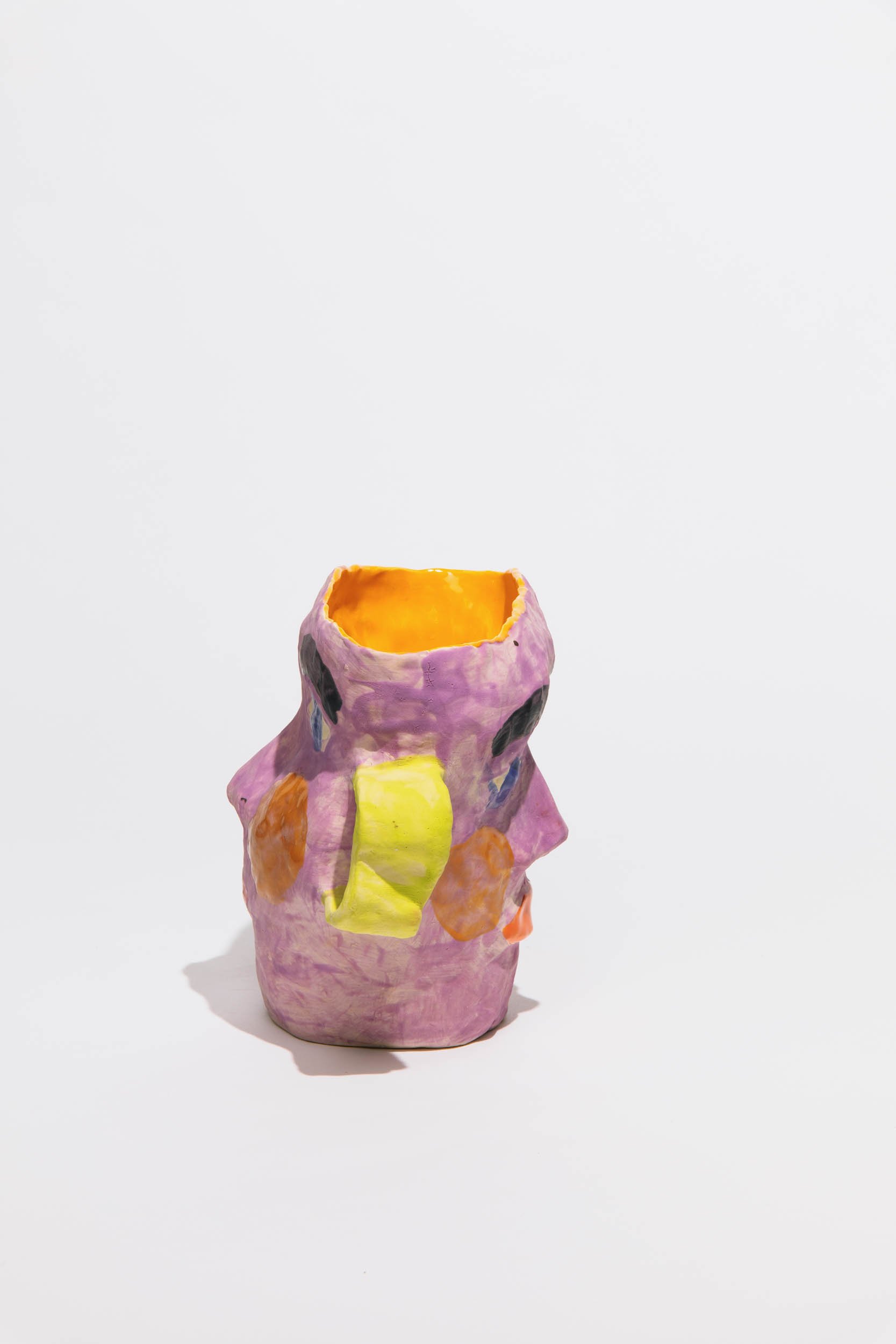Anna Riess, 'Purple Prince', ceramic object, 2020



Anna Riess, 'Purple Prince', ceramic object, 2020
This ceramic sculpture, Purple Prince, is the inaugural piece in Anna Riess’s ongoing exploration of identity through doubled faces and mirrored perception. Shaped into a rounded head with a face on either side, the work embodies duality, ambiguity, and the quiet humor of not quite aligning with oneself. A subtle cross-eyed gaze softens the piece’s intensity, lending it a sense of vulnerability and charm—an invitation to look closer, and then again.
Glazed in a regal, bruised purple, the surface carries connotations of inner nobility and emotional depth, as well as the marks left by experience. The double-faced form oscillates between self and other, sincerity and performance, evoking the sensation of being watched and watching back, of trying to hold onto coherence in a constantly shifting inner landscape.
As the first head in Riess’s sculptural series, Purple Prince sets the tone for a body of work rooted in reflection, play, and the quiet strangeness of human expression. Suspended between mask, bust, and totem, it becomes a figure of contradiction—tender and theatrical, stable yet always slightly askew.
Anna Riess is a multidisciplinary artist and cultural anthropologist based in Vienna. Her work explores themes of embodiment, emotion, and interbodily relations through materials like clay, metal, and textiles. Deeply influenced by her experience of motherhood, she transforms everyday objects into symbolic forms - one of her gestures she describes as the “nippelization of the everyday.”
Riess is the co-founder of the Clayground retreat and the creator of Circle of Clay, a workshop series she has led at institutions such as the Museum of Applied Arts in Vienna or the Hotel Kai36 in Graz. Her workshops invite participants—regardless of prior experience—to develop their own sculptural language through hands-on engagement with clay.
Her sculptural objects possess a strong visual identity and tactile presence, marked by a recognizable aesthetic and a willingness to push the boundaries of material behavior. Especially drawn to the tactility of clay, Riess explores how movement and fluidity can be captured in form—leaving the trace of the hand visible in its hardened state. With a strong interest in local materials and interdisciplinary exchange, her practice bridges artistic, social, and ecological concerns in both conceptual and applied ways.